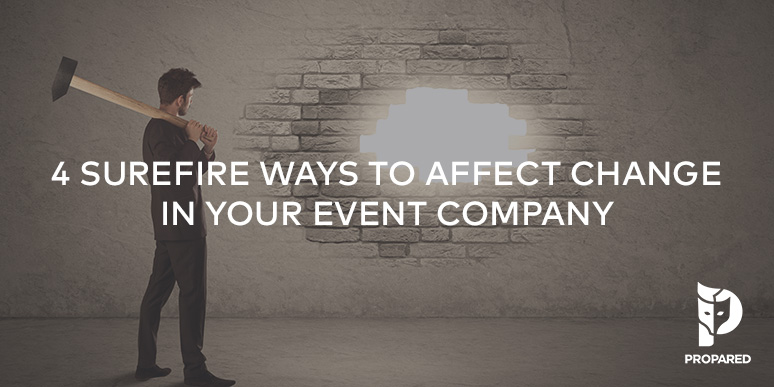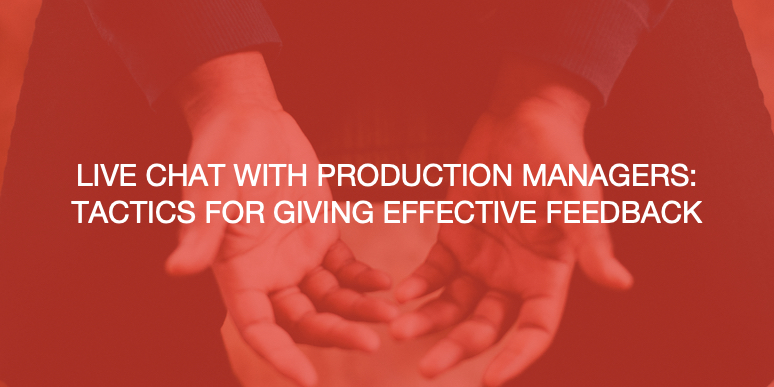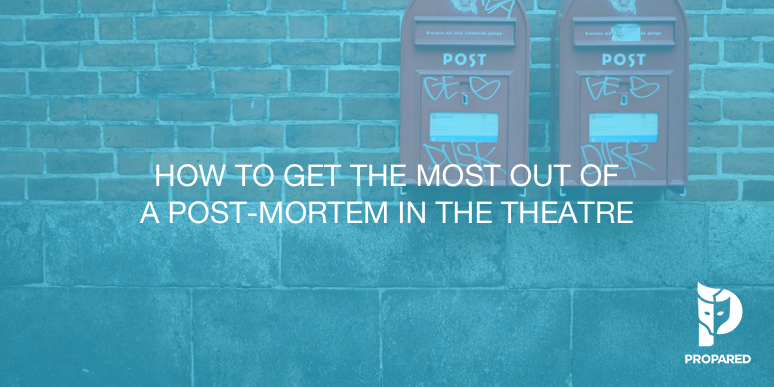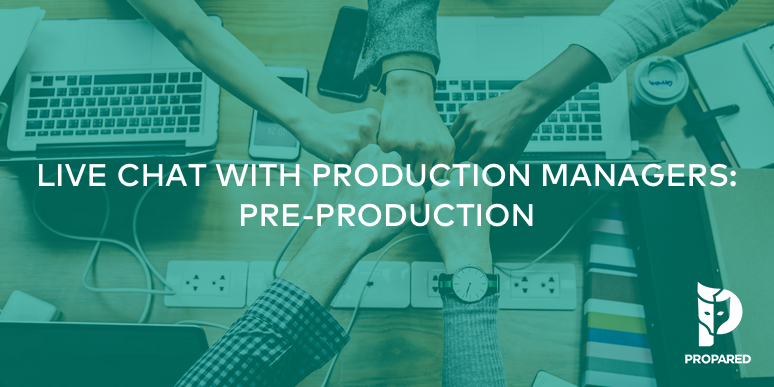
“That’s the way we’ve always done it.” Translation? The death-knell of progress.
Change can come slowly for organizations (particularly large ones) and for many reasons. Perceived lack of competition, complex systems, cost, and many others. Event production companies are no different. If anything, these issues are compounded by the short lifecycle of events. So much needs to be done in such a short period to execute a project, when is there time to implement a new system?
And if you aren’t a key decision maker, this can all feel a little hopeless. But does that mean you should just put your head down and carry on? Of course not! Your company (though it might not proclaim it openly) needs your input. It needs other perspectives to help it grow and compete. So if you see opportunities for improvement, here are 4 tips to help you bring your ideas to the table and maybe even push your company in a positive new direction.
1. Start with the Problem, Not the Product
It rarely makes sense to change things, “Because there is new technology!” Simply that there are tools available doesn’t mean those tools will be the best fit for your organization. Instead, start with the problem. Identify the parts of your event business that are least efficient. Is it scheduling? Communication? Client outreach? Ask yourself the following questions.
-
Where are you spending the most time?
-
Where do the majority of mistakes happen?
-
Where is the company overspending?
It’s likely that the answers to these questions point to the same part of the workflow. Once you spot the need, you can begin to look for potential solutions (i.e., products!).
2. Focus on One Thing at a Time
“This is too much of a mess. We can’t possible fix all this. Where would I even start?” The feeling of being overwhelmed can stall action. Let yourself off the hook. You don’t have to fix it all. And you don’t have to fix it all immediately. In fact, it’s probably best that you and your company don’t. For a couple of reasons.
First, just because you identified an area for improvement, doesn’t mean it is the root cause of a problem. It may be a symptom of something larger. The problem might be in scheduling. Or, it might be in poor communication. The only way to know is to change one thing, monitor it for effect, and debrief. Change multiple things at the same time and you’ll never know what truly was the right fix.
Second, your company is still accepting business and marketing its event services. You have existing clients. Depending on the change, you could wind up with terribly mixed messages and a fractured brand identity. This is the last thing you want: trying to convince a client you know how to execute a cohesive event while your own brand is anything but.
Third, change isn’t about finding the magic bullet. It is about continuous improvement. Your company may make a change that turns out to be a mistake. You want that error to be relatively painless to fix. At Propared, we’re firm believers in this methodology, because:
-
You’re always learning
-
It’s easier than trying to overhaul everything
-
It’s cheaper
-
It’s easier to get buy-in
-
It builds momentum for future improvements
-
It will help you make better decisions on future changes
Start with one thing. Say to yourself, “I know we have a lot of challenges, but what’s the one we want to work on first? Here are a few examples to get you started.
-
Scheduling challenges
-
Labor booking
-
Communication
-
Redundant work
-
Fragmented workflow
3. Show the Value (Facts & Figures)
Senior event managers, owners, folks that aren’t “down in the trenches” with you may not see the same inefficiencies you see. They have a different set of challenges to wrangle (you know, build the business!). What’s important to you may not be as important to them. Or put another way, they might feel the same effects of bad workflow but not attribute it to what you are experiencing.
You’ve identified a problem as well as several proposed solutions. Now you need to connect it, even cursorily to the output of the entire company. Whenever possible, talk dollars. Or time, which can translate directly to dollars as well.
-
How much time will your proposed solution save?
-
How many mistakes per project are you likely to eliminate?
-
How much money will it save in the long run?
The last question is vital. Because any new event tech, hiring, or general system change is going to have an upfront cost. If you can’t show its value or how it pays for itself over a period of time, it’s going to be a hard sell.
4. Build a Coalition
“One swallow does not make a summer; neither does one fine day.” So said Aristotle. One voice (yours) pitching a problem or opportunity might not be enough to push it forward. What about two voices? Or five, or ten?
If you really want to see an idea for change take wing, build support on your team. Take the time to drum up a groundswell of energy behind the idea. If the entire lighting department is sold, it’s a lot harder for your boss to say no. Think of it as a form of social proof. If a lot of people are giving voice to an issue, it is at least worth reviewing.
One of the greatest things I’ve learned about an organization, especially an event production company, is that it’s NEVER static. It’s practically a living thing, always evolving to adapt to new client demands. So why shouldn’t we assess and improve our internal tools with the same aplomb as we do our clients’ events?
Even if you aren’t the one pulling the levers, your voice is powerful and incredibly important. Your observations about event execution can have substantial impact on how your company grows. So the next time you’re grabbing drinks with coworkers and commiserating about “the way things are,” grab your phone (or bar napkin) and sketch out some solutions. If you want to affect change, stop talking and start doing.



